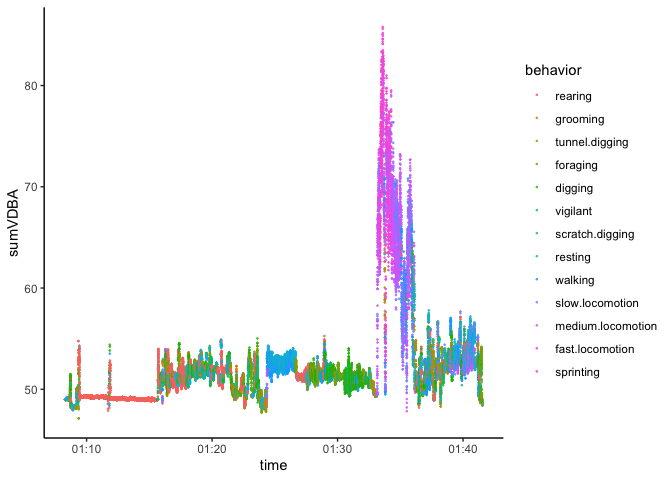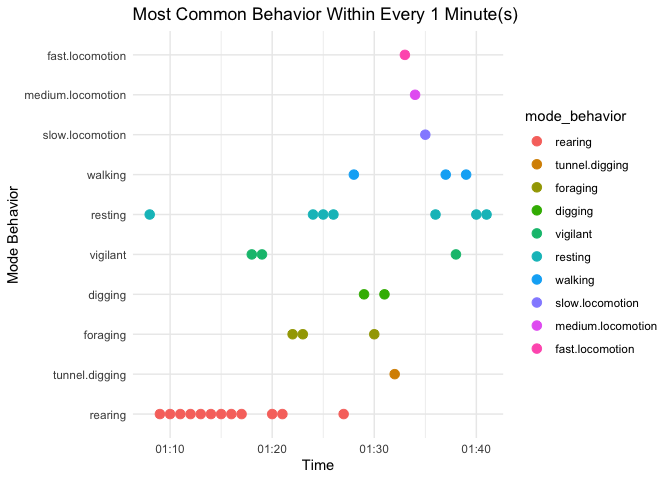The goal of rabbit is to …
Use package RcppRoll to optimise claulcations of metrics clculated in
wolling windows, e.g. rolling mean, var, sd etc.
You can install the development version of rabbit from GitHub with:
# install.packages("devtools")
devtools::install_github("traitecoevo/rabbit")This is a basic example:
library(rabbit)
library(dplyr)
#>
#> Attaching package: 'dplyr'
#> The following objects are masked from 'package:stats':
#>
#> filter, lag
#> The following objects are masked from 'package:base':
#>
#> intersect, setdiff, setequal, unionsuper-fast version of the rolling window calculations:
example file is less than one hour of a bilby called piccolo:
df <- arrow::read_parquet("tests/testthat/raw_Pic2Jan_50000.parquet")
nrow(df)
#> [1] 50000the new version is pretty fast:
system.time(dat <- moving_window_calcs_2(df))
#> user system elapsed
#> 0.132 0.010 0.161sumVDBA is the best measure we have of heat-generating movement or activities:
library(ggplot2)
dat %>%
ggplot(aes(x = time, y = sumVDBA)) +
geom_point(size = 0.2) + theme_classic()Now can classify all these movements based on a pre-built classifier from a zoo animal:
# load a classifcation object
MSOM = readRDS("tests/testthat/MSOM_8by7_small.rds")
# make predictions
nighttime_activities <- classify_behaviors(dat, MSOM)we can order the activities by their estimated energy use / heat production:
nighttime_activities <-
nighttime_activities %>%
filter(!is.na(behavior)&!is.na(sumVDBA)) %>%
mutate(behavior = forcats::fct_reorder(behavior, sumVDBA, .fun = median, na.rm = TRUE))and we can plot energy use and estimated activity through time
nighttime_activities %>%
ggplot(aes(x = time, y = sumVDBA, col = behavior)) +
geom_point(alpha = 0.7, size = 0.2) + theme_classic()the data seems to at a temporal resolution of 25 readings per second which might be a lot to handle for various graphing applications. Here is a function to take the mode of the categorical variables at a given resolution.
window_in_minutes <- 1
minute_summary <- summary_by_time(nighttime_activities,
time_col = "time",
behavior_col = "behavior",
window_minutes=window_in_minutes
)
minute_summary %>%
ggplot(aes(x = window, y = mode_behavior, color = mode_behavior)) +
geom_point(size = 3) +
labs(
x = "Time",
y = "Mode Behavior",
title = paste0("Most Common Behavior Within Every ", window_in_minutes, " Minute(s)")
) +
theme_minimal() -> plotting
print(plotting)

